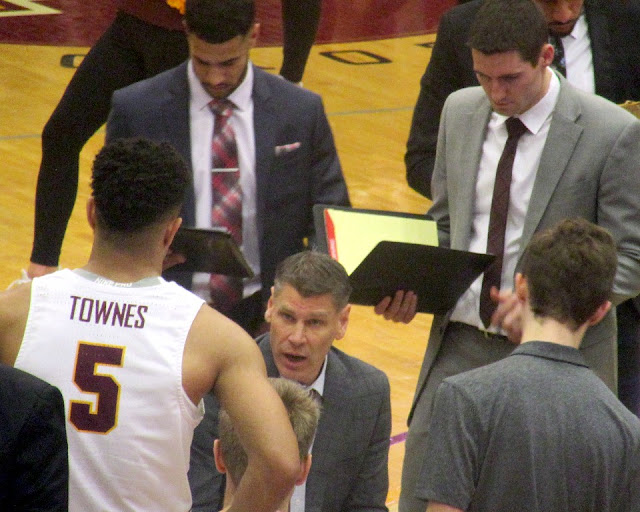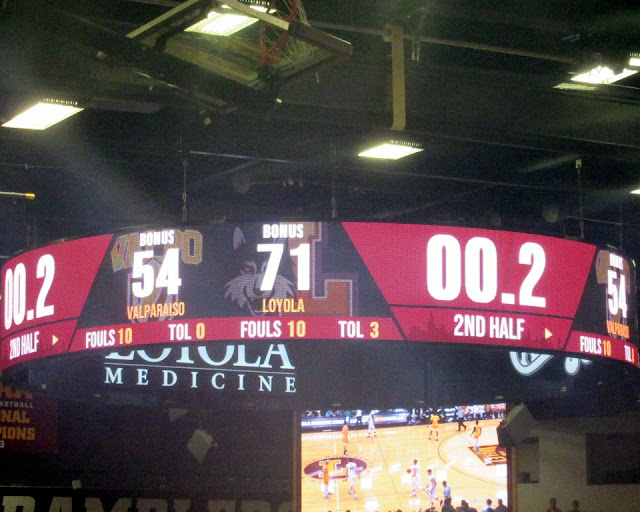Last month, in what has been the biggest trade of this baseball off-season, the St. Louis Cardinals acquired first baseman Paul Goldschmidt from the Arizona Diamondbacks.
Unless you're a really avid baseball fan, you might not even know his name, but he's been one of the game's best players for the past several years.
This includes being an All-Star each of the last six seasons, hitting at least 33 home runs in four of those and winding in the top-11 of MVP voting five times, with three top-3 finishes.
Now 31, Goldschmidt made his major league debut with the Diamondbacks on August 1, 2011 at the age of 23.
Just two summers before, after three years of college--at Texas State University, where he had considerable success--Goldschmidt was drafted by the Diamondbacks in the annual MLB Amateur Draft.
In the 8th round!!!
245 players--at least 200 of whom even the most hardcore baseball fan has likely never heard of--were selected before Paul Goldschmidt.
To which the few of you actually reading this might say, "Big fecking deal, it happens," which is of course, true.
Mike Piazza, now a Hall of Famer, was famously drafted in the 62nd round of the 1988 amateur draft. 1389 players were taken ahead of him, none of whom have or likely will make the Hall of Fame.
So yes, baseball--and any sport--is littered with stories of "Can't Miss" prospects who surely did, and conversely, lightly-regarded players who became legends.
But without trying to make this some kind of treatise or thesis, I've long been fascinated by the "hits and misses" of the MLB Amateur Draft--which has far more rounds than the NFL, NBA or NHL drafts--at face value, but also as some sort of life lesson.
Now before I get too deep into this, let me explain a few things.
It's the beginning of 2019 and, after posting a bunch of "Best of 2018" lists on this Seth Saith blog, I don't yet have anything obvious to write about.
I haven't seen any concerts, musicals or plays to review, and don't have much coming up soon.
And without wishing to reveal much, some systems are down at work, so there isn't much to do.
As a baseball fan, I often like to peruse
Baseball-Reference.com, and while glancing through draft classes isn't anything new for me, I have presently focused on 2009--partly due to Goldschmidt, partly because it's now a decade ago, partly due to other anomalies I'll address, but really kind of randomly as well.
Other than as a Pepsi and peanuts vendor in my teen years, I've never worked for a baseball team, and have no real knowledge--beyond reading and seeing
Moneyball, itself providing widely-universal life lessons--about how their front offices and scouting systems work.
I imagine there are some differences between teams in how the scouting operation is structured and how well it is funded, but my assumption is that every major league franchise spends millions each year in employing numerous scouts--and perhaps also relying on freelancers and purchasable resources--in order to gauge the talent of high school and college baseball players across the country...and around the world.
Especially when it comes to baseball as baseball--and not some allegory--that end part is an increasingly important caveat.
Unless it has changed recently in ways which I'm unaware, the MLB Amateur Draft focuses only on selecting players from high schools and colleges in the United States, including Puerto Rico. Currently there are 40 rounds and about 1,200 selections made by the 30 teams, with a few more "supplemental" picks I won't delve into here.
The draft used to be even bigger; in 2009, when Goldschmidt went #246, there were 50 rounds and 1,521 picks made.
But per the latest statistics I could find, nearly 30% of current major leaguers--and presumably a similar portion of those in the minor leagues--are from other countries: the Dominican Republic, Venezuela, Japan, Korea, Cuba, etc., and unless they moved to the U.S. to play high school or college ball, they weren't part of the amateur draft.
Teams otherwise scout and sign non-U.S. players, without a draft system. (I don't know the success rate for foreign player acquisitions, but imagine it is also relatively low.)
With minor league affiliates to populate at at least 4 different levels, major league franchises presumably
expect most draft picks will never reach the major leagues, let alone become starters or stars, and the influx of fantastic foreign players makes the chances even lower.
Still, in trying to get to my real point here, every major league franchise spends millions of dollars and man-hours on "baseball experts" who presumably possess a somehow proven ability to gauge the abilities of young ballplayers and--without meaning disrespect to the scouts or players who "miss"--they are incredibly wrong
most of the time.
Hence, in general, take "expert" assessment--or people telling you what you can or cannot do or become--with a grain of salt.
For although, generally, a good portion of first round picks wind up making the major leagues, consider this:
In Round #1 in 2009, 49 players were selected. Of these, only 6 position players have had 900 or more big league at bats, and just 13 pitchers have appeared in more than 100 games.
I know these are old-school stats, but
there are only two 2009 first-rounders with 90+ major league home runs and just 4 pitchers with 50 wins.
Some players are drafted out of high school--and may or may not sign at that point--and others out of college, so ages vary among the 2009 class from about 27 to 31. Hence, my bar for "making it" may not be universally applicable, but the point is that only about 12% of the 2009 first-round truly has.

And the biggest superstar by far--Mike Trout--went #25, to the Angels, who with their first-pick of round one took Randal Grichuk at #24 (he's turned out pretty good too, as the only other 90+ homer guy, but has 91 to Trout's 240).
You can see
Round 1 of the 2009 MLB Draft here--and all the rounds of all drafts by entering the proper variables--so I won't add to anyone's Google grief by naming highly-drafted players who "didn't make it," but the guys taken #3 and #5 never even reached the major leagues, and there are very few starters, let alone stars, from the 1st round. (Other draft classes are likewise hit and mostly miss.)
But what really strikes me is that--besides Trout, who himself shows the fallibility of so-called experts--
there are far more great successes taken in Round 7 or later than in the 49-pick first round.
And I'm only counting here the draft slot upon which a player was signed, as many--such as Goldschmidt in Round 49--were taken out of high school, didn't sign, and were re-selected higher after college.
The fun--
now I tell you--really is in some of the specifics.
(These are all 2009 draft/signee examples.)
- J.D. Martinez (195 career HR;
full stats) -
20th round (pick #611)
- Khris Davis (48 HR in 2018;
full stats) -
7th round (226)
- Matt Carpenter (36 HR in 2018;
full stats) -
13th round (399)
- Dallas Keuchel (2015 Cy Young winner;
full stats) -
7th round (221)
- Dan Straily (132 pitching starts;
stats) -
24th round (723)
- Scooter Gennett (2018 All-Star;
stats) -
16th round (496)
- Trevor Rosenthal (great closer before injury;
stats) -
21st round (639)
- Matt Adams (96 HR;
stats) -
23rd round (699) - like Rosenthal, taken by the Cardinals
- Brian Dozier (172 HR;
stats) -
8th round (252) - 6 picks after Goldschmidt
- Yan Gomes (2018 All-Star;
stats) -
10th round (310)
- Justin Bour (84 HR;
stats) -
25th round (770)
- Brandon Belt (112 HR;
stats) -
5th round (147)
- Kyle Seager (175 HR;
stats) -
3rd round (82)
- Nolan Arenado (186 HR;
stats) -
2nd round (59)
So sure, the first overall pick in 2009,
Stephen Strasburg, has had a pretty stalwart career (
stats), despite a number of injuries.
And some other players--
Mike Leake (taken at #8),
A.J. Pollock (#17),
Grichuk,
James Paxton (#37)--have had decent careers, with a few others having some solid seasons.
But pretty much all the other first-rounders from 2009--except, of course, Trout--have been flops, to one extent or another. Some perhaps due to injury; others, who knows why?
I respect the game of baseball--and how difficult it must be to hit or pitch a ball consistently, for years on end--enough not to belittle anyone who, despite clearly formidable talent, failed to make it.
The success rate is so low, even among the "can't miss," that I also won't condemn scouts or teams for getting it right so seldomly. Or wrong so often.
Though I do ponder whether there is some systemic issue that doesn't allow even the most adroit scouts to identify players who will make it vs. those who won't. Is it really that much of a crapshoot?
But well beyond baseball, or athletics, it does make you wonder:
If so much effort and expertise is invested into ascertaining "who will be great?" with so little acuity, why believe what anyone says about you and your potential.
Whatever you wish to do, in the New Year and beyond, don't feel daunted.
24 teams--even his own--didn't know Mike Trout would become the best player in baseball, as he has been since the age of 20.
And you can be pretty sure that none of the 610 people drafted ahead of J.D. Martinez--despite a few similar success stories cited above--after he had played at Nova Southeastern University, in 2018 hit .330 with 43 home runs, 130 RBI and a 1.031 OPS playing for the World Champion Boston Red Sox.
Or earned $23.75 million.

And before you tell me AL MVP Mookie Betts was even better, even he was just a 5th round pick, #172 overall, in 2011.
Nobody knows.
Anything is possible.
As the great Joe Strummer--who has nothing to do with baseball--once said:
The future is unwritten.















































